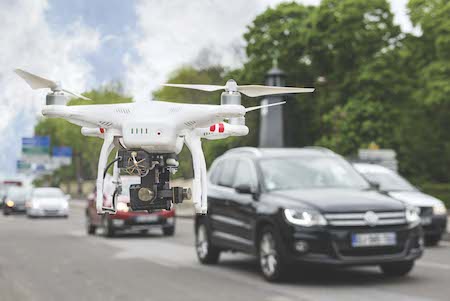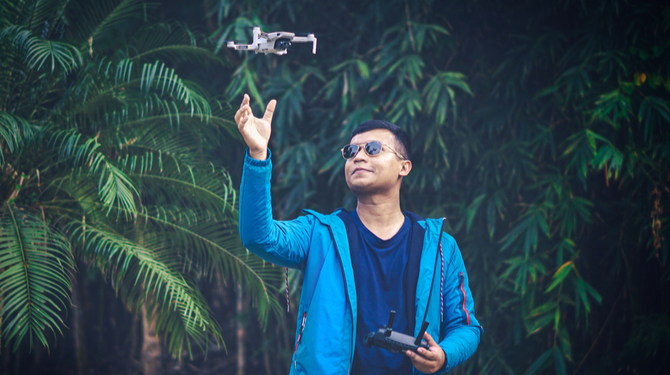DropIn Drones
DropIn launched in 2015 and is seeking to change the way insurance companies process claims with its innovative use of drones in appraisals and it provides live video streaming services to assist insurance companies in appraising claims.
“Insurance companies are experiencing a phenomenon known as the ‘adjuster conundrum,’” explains DropIn’s Chief Revenue Officer, Jen Friel. “The caseload of claims hasn’t gone down, yet the current adjuster workforce is ageing out. They know they need to attract millennials, but to do so, they have to ‘get with the times’.” Technologies such as UAVs are only going to become more common in an effort to counteract this conundrum.
In the most simple case, someone who has been in a car accident will contact their insurance adjuster who can interview the drivers and appraise the damage right on the spot viewing the damage through the driver's smartphone. The full suite of live video services runs from direct-to-claimant, direct-to-field or partner resource, and Droperator, their 60,000 strong on-demand workforce.
Overhead property appraisal or surveying a disaster area for damage appraisal is where the use of UAVs comes in. Someone from a team of drone operators – a network of 1,100 licensed operators all over the US – will travel to the site to operate the drone, equipped with a camera or even smartphone camera, and then transmit the video and pictures back to the insurance company. Roof inspections are another important use for UAVs, given that it is an expensive part of the process for insurance companies to pay their adjusters to inspect roofs.
The principal challenge facing the company at the moment is one of engagement. Letting people know that they have the use of this technology and that it can quantifiably improve the service is one of the main hurdles to overcome in early adoption of a new technology. Friel is confident that the positive feedback they had received so far will encourage further use of drones in the insurance sector.
The continued use of drones in insurance will lead to improvements in claims management and a decrease in fraud, which, according to the Insurance Information Institute, amounts to 10% of property and casualty insurance losses each year, amounting to $32 billion losses. Drones surveying a property can create an accurate 3D model of its condition after an incident, and should increase the speed of the compensation process, providing much greater customer satisfaction.


.jpg)
.jpg)
.jpg)

.jpg)


.jpg)
.jpg)
